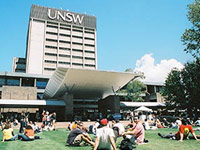|
|||||||||||||||||||||||||||||||||||||||||
| Eurocentred Visions: Grand Narratives in Western Art - SAHT2211 | |||||||||||||||||||||||||||||||||||||||||

Description To tell progressive stories about Western art, grand narratives were constructed. In these grand narratives, as this course reveals, Eurocentric and ethnocentric historical material was ordered into stories about Western nations becoming more and more civilised as signified by the development of perspective, the Classical canon, landscape and cityscape, portraiture and the nude from Ancient Greece to Modernism. Positioned as peripheral to this evolution or merely a sub-text to these grand narratives, Non-Western art, particularly that of Islam, was either excluded or misrepresented as uncivilised, regressive and barbaric. Issues of cultural difference capable of disrupting the seamless flow of Western art's evolution, such as gender relations, sexualities, ethnicities, nationhood, diaspora, work, patronage and money, criminality and disease, were disavowed. To deconstruct these grand narratives, this course will use these exclusions and denials as its tools. Drawing upon interdisciplinary models for reconstructing history provided by Michel Foucault, Edward Said, Jonathan Crary and Abigail Solomon-Godeau, amongst others, it will explore how to rewrite histories of art in relation to non-western art, homoeroticism, manhood and the 'heterosexual imperative', prostitution and 'the venereal peril', health, disability and hysteria, the alienated and displaced, the 'orientalised other', the nuclear family and 'docile bodies'.
Course Outline |
|||||||||||||||||||||||||||||||||||||||||


